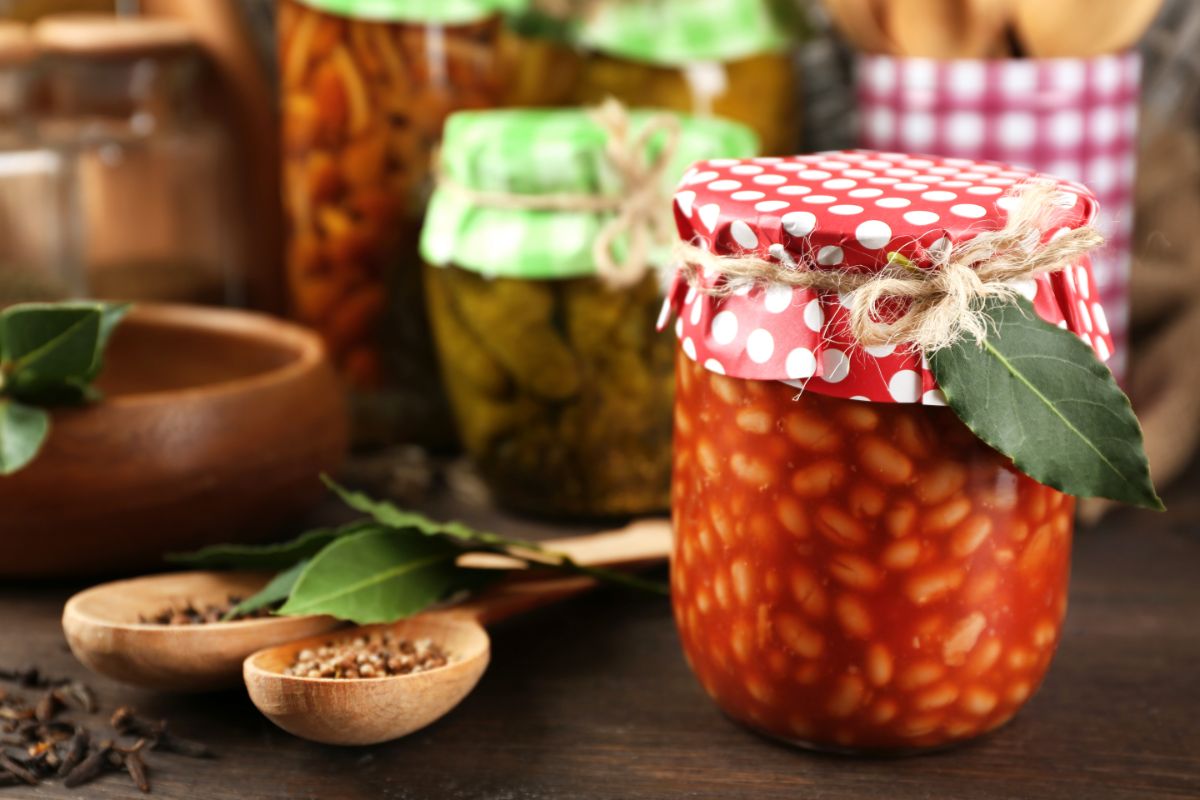Pressure canning pork and beans begins by soaking dried beans overnight. Boil the beans for 30 minutes in a pot with a sauce made from tomatoes, honey, mustard, brown sugar, and salt pork. Transfer the mixture into hot canning jars and pressure can for 75-90 minutes.
What Is The Best Method For Canning Pork And Beans?
Pressure canning is the best method for canning homemade pork and beans due to its ability to reach high temperatures necessary for safely preserving low-acid foods. The high pressure inside the canner ensures that harmful bacteria and microorganisms are effectively killed, preventing spoilage and foodborne illnesses.
Pressure canning also helps maintain the texture and flavor of the pork and beans. This method also provides a longer shelf life for canned pork and beans, allowing you to enjoy them for an extended period without compromising quality.
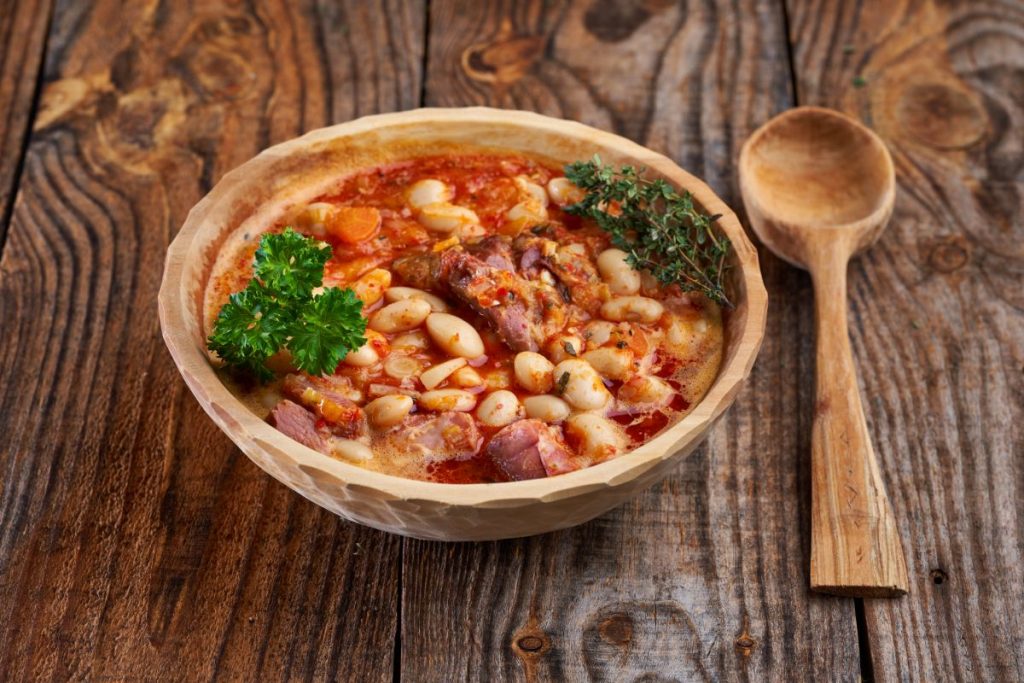
Canning Methods to Avoid When Canning Pork and Beans
Using pressure cookers or water bath canners is not recommended for canning pork and beans due to the low acidity of the food. They require higher temperatures than water bath canners or pressure cookers reach, posing a risk of bacterial growth and potential foodborne illnesses.
Print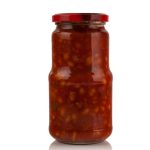
Homemade Pork And Beans Canning Recipe
- Total Time: 3 hours, 30 minutes
Description
This homestead canning pork and beans recipe offers a combination of tender pork, flavorful beans, and a delicious sauce. Enjoy this “pork n’ beans” as a side dish or main course!
Ingredients
- 2 pounds navy, pinto, or great Northern beans
- ¼ cup brown sugar
- 2 medium onions, chopped
- 2 tablespoons honey
- ¾ teaspoon prepared yellow mustard
- 3 cups water
- 2 pints of homemade tomato sauce or ketchup
- 1½ to 3 tablespoons sea salt
- 1 lb of diced bacon, salt pork, or fatback
Instructions
- Use the soak method by leaving dry beans in a large pot or gallon jar, covering them with 3 inches of water, and letting them soak for 10 to 12 hours or overnight.
- Once soaked, rinse the beans under running water and drain them in a colander or strainer.
- Sterilize canning jars and lids by washing them with hot, soapy water. Keep the jars and lids hot until needed. You can keep them in simmering water or a warm oven.
- In a separate pot, combine water, tomato sauce, honey, mustard, brown sugar, and optional hot sauce to make the sauce. An alternative combination is tomato juice, dry mustard, and a piece of salt.
- Boil the beans for 30 minutes in a large pot. Optional: If you prefer Boston baked beans, pour the sauce over the beans; cover and bake at 350ºF for about 3½ hours. Boston baked beans will need to have water added and a soupy consistency for home-canning baked beans.
- Brown the bacon or salt pork in a skillet on medium-high heat for a few minutes, taking care not to cook it until it is crispy as it will continue cooking in the canner. Browning the meat first helps prevent clumping in the jar, as well as removing air and liquid so more can be added.
- Using a ladle and canning funnel, evenly distribute the beans, salt pork or bacon, onions, seasonings, and sauce among the hot jars.
- Fill the jars with boiling water, leaving 1-inch headspace.
- Remove air bubbles by running a soft kitchen utensil like a spatula around the inside of the jars. Wipe the jar rims, and attach the lids and rings. Screw the rings until fingertip-tight.
- Fill the canner with water and a splash of white vinegar.
- Add the jars, seal the canner, and ensure the heat is on high to build pressure.
- Vent the canner for at least 10 minutes, then place the regulator on and allow the pressure to build to the recommended level per your canner type and elevation:
Dial Gauge Pressure Canner
- 0-4,000ft: 11 lbs
- 4,001-6,000ft: 12lbs
- 6,001-8,000ft: 13lbs
- 8,001-10,000ft: 14lbs
Weighted Gauge Pressure Canner
- 0-1,000ft: 10 lbs
- 1,001ft and up: 15 lbs
Post Processing
- For all canner types, ensure you have processed pints for 75 minutes and quarts for 90 minutes.
- After processing, allow the pressure to return to zero, unseal the lid, and remove the jars using canning tongs. Set them on a cushioned surface to sit undisturbed for 12-24 hours.
- Check the seals on the jars by pressing on the lids. If the lids flex, they are not properly sealed. Label all sealed jars with the date and contents and store in a cool, dry place.
- Prep Time: 30 minutes
- Canning Time: 90 minutes
- Cook Time: 75 minutes
Nutrition
- Serving Size: 1 cup
- Calories: 268kcal
- Sodium: 1047mg
- Fat: 3.9g
- Saturated Fat: 1.5g
- Carbohydrates: 51g
- Fiber: 14g
- Protein: 13g
- Cholesterol: 18mg
Is It Safe To Can Pork And Beans?
Yes – it’s safe to can pork and beans. The NCHFP has a recipe for beans that states pork may be added to it.
What Is The Best Canning Liquid For Canned Pork And Beans?
The best canning liquid for pork and beans depends on your personal preference. Some popular options include a savory tomato-based sauce, a smoky bbq sauce, a tangy vinegar-based sauce, or a simple broth.
A tomato-based sauce adds richness and enhances the overall taste, while a barbecue sauce imparts a sweet and smoky flavor. A vinegar-based sauce provides a tangy kick, and a broth allows the natural flavors of the pork and beans to shine.
Should Pork And Beans Be Hot Packed Or Raw Packed?
For optimal results, pork and beans should be hot-packed. Hot packing involves pre-cooking the pork and beans before placing them in the jars with the canning liquid. This helps ensure the food is thoroughly heated, eliminating any potential bacteria or pathogens.
What Kind Of Beans Should Be Used When Canning Pork And Beans?
When canning pork and beans, it is recommended to use dried beans. Recommended varieties for canning include Northern beans, navy beans, pinto beans, and kidney beans. These beans are known for their creamy texture, ability to hold their shape during canning, and compatibility with pork.
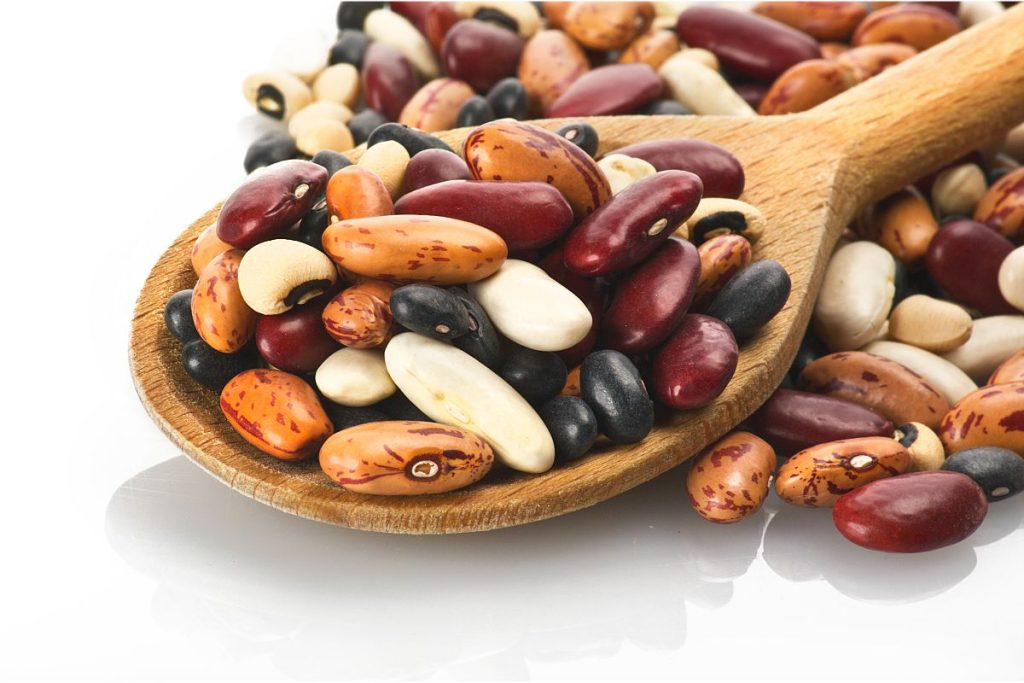
How Much Sugar Is Needed For Canning Pork And Beans?
The amount of sugar needed for canning pork and beans varies depending on the recipe and personal preference. It is common to add 1-2 tablespoons of sugar per quart of canned pork and beans to enhance flavor and balance the savory notes.
What Is The Difference Between Canning Beans And Canning Soup?
The main difference between canning beans and canning soup is the presence of liquid. When canning beans, the focus is on preserving the beans themselves in a liquid or sauce, while canning soup involves preserving a mixture of ingredients, including vegetables, meat, and broth.
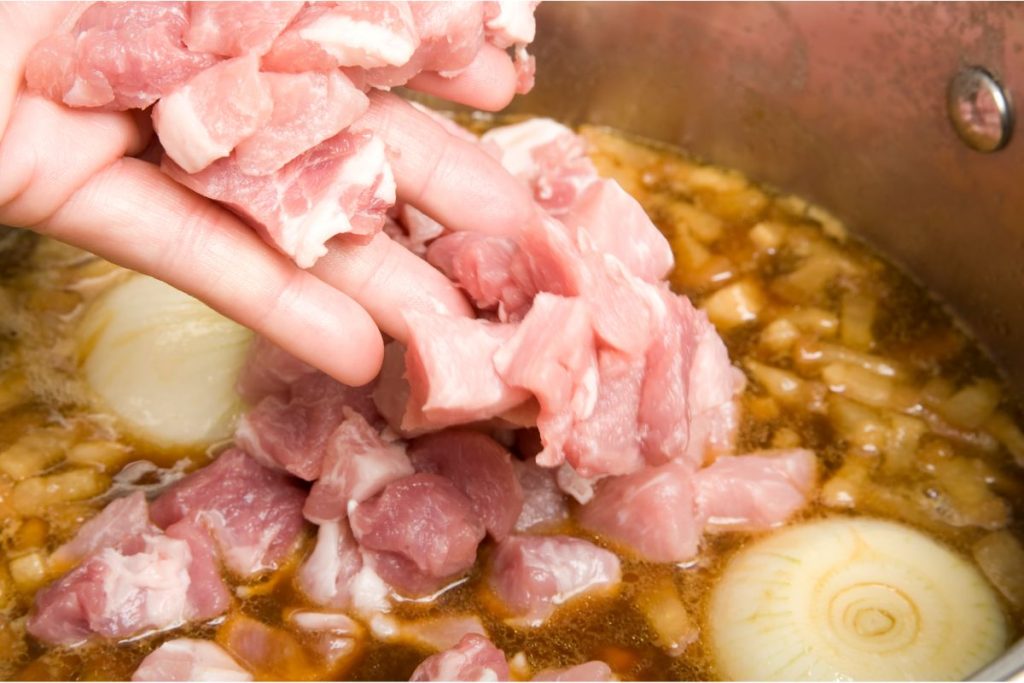
How To Store Canned Pork And Beans
The best way to store canned pork and beans is in a cool, dry, dark place. Ideally, store the jars in a pantry or cellar where the temperature remains relatively stable. Ensure the cans are kept away from direct sunlight, heat sources, and excessive moisture. Additionally, label the jars with the canning date for easy tracking and rotation.
How Long Can Canned Pork And Beans Be Stored?
According to the National Center for Home Food Preservation and the USDA, the recommended shelf life for the best quality canned pork and beans is within 12 to 18 months from the date of canning.
While canned pork and beans may remain safe to consume beyond that period, the taste and texture may deteriorate. It’s always advisable to check the seals, appearance, and smell before consuming canned foods.

